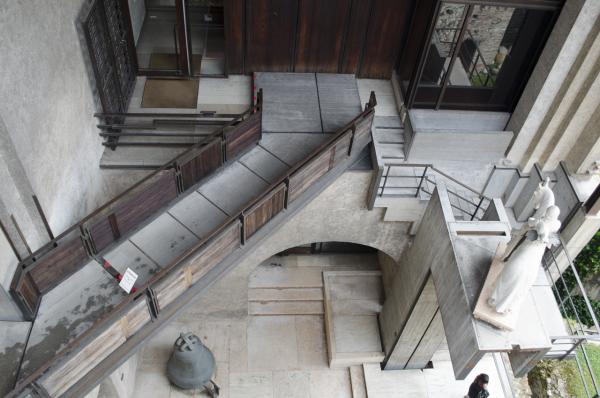Museo di Castelvecchio: Photographs by Sean O'Brien

Independent Research Travel Scholarships are competitively awarded to UTSOA students to encourage independent study and advanced research travel. During the 2015 – 2016 academic year, students received over $40,000 in scholarship funds and traveled to more than 20 countries on six continents. Students—whose research output includes photographs that fall within the scope of the school’s Visual Resources Collection—contribute content to its online image collection. The images are made available for use by faculty, students, and staff to support teaching and research.
We recently sat down with Master of Architecture student, and winner of the Boone Powell Family Prize in Urban Design, Sean O'Brien to learn more about his experience as a recipient of an Independent Research Travel Scholarship, and his work in 2015 exploring Carlo Scarpa's Museo di Castelevecchio.
What prompted your visit to Castelevecchio? Did you travel there to document this project, or was it an incidental discovery?
Castelevecchio is one of Carlo Scarpa's definitive building interventions. It is hard to describe my experience in this museum in only a few sentences, as it is a complex place with an equally complex history. My interest in this place was how Scarpa's interventions operate between several scales over a long period of time, in respect to the Castle's complex history and its new program. I was interested in how craft and material can play a role in reactivating the imagination and spirit of place through heightening your senses and awareness within a space.
What was your overall impression of the place?
I traveled to Verona with one goal in mind; to visit Museo di Castelevecchio. This trip epitomizes my long-time fascination with Carlo Scarpa and the complexity of his work, attempting to advance the Veneto tradition of building in a modern era.
What about this building did you find interesting? Did it exceed your expectations? Fall short?
The building exceeded my expectations. It is hard to say what I find most interesting. I think the most important impact of this work is how it is at times hard to tell where the existing building ends and where Scarpa's intervention begins. This attention to detail draws you in. I think that the use of material is particularly fascinating. Specific elements are treated in ways that show a certain care and attention that is unmatched in much of the design I have seen in other parts of the world. A stair is never just a stair, and a wall is never just a wall. The standard architectural elements serve purpose beyond their tangible manifestation. His care for Veneto tradition and the builders and craftsman who shape that tradition is true throughout the entire work. I think that this is an important legacy of Scarpa's and is something that any architect and designer can take away from his entire body of work.
To browse all images donated by Sean, visit the VRC's online image collection. Log in using your EID and select the "Advanced Search" option. Search for "Sean O'Brien" in the Source Name field.

